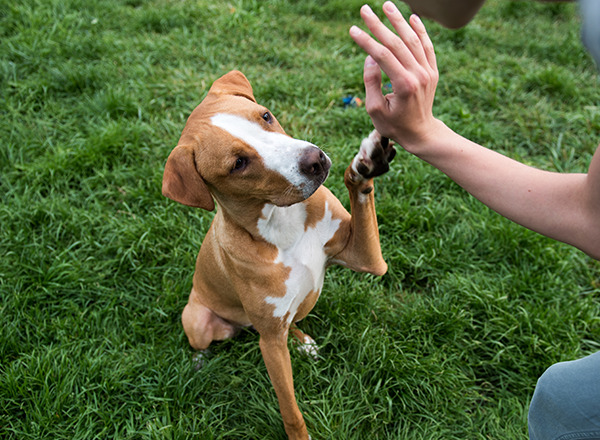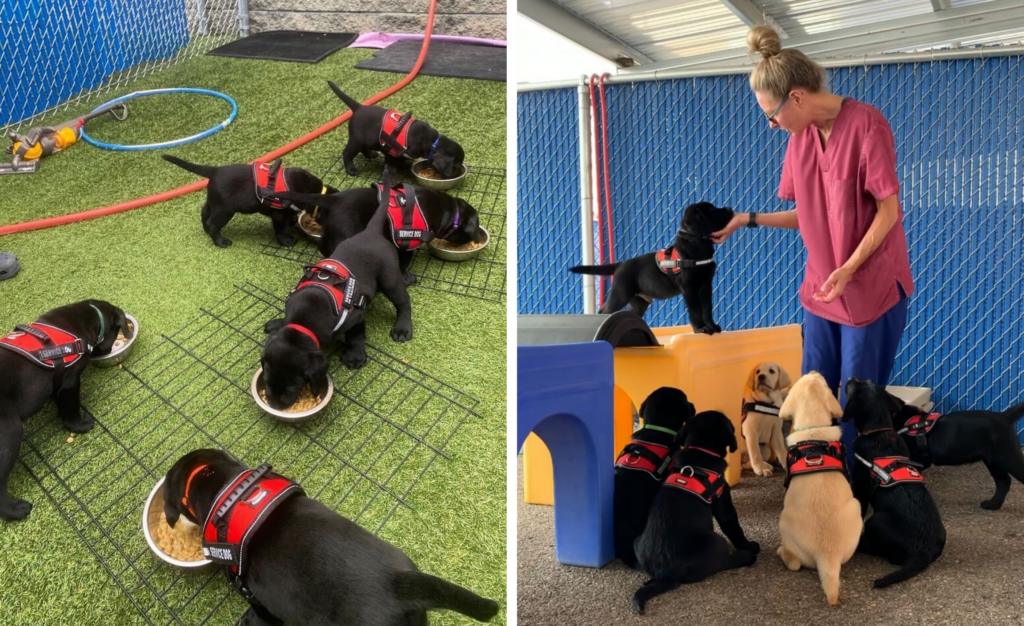Top Strategies for Effective Dog Training Techniques Every Pet Owner Should Know
Top Strategies for Effective Dog Training Techniques Every Pet Owner Should Know
Blog Article
Novice's Guide to Effective Dog Training at Home
Successfully educating a pet at home requires a nuanced understanding of canine habits and effective interaction methods. Developing clear training goals, using high-grade incentives, and keeping consistency across family members are critical elements. Integrating training into everyday routines can improve both involvement and retention.
Understanding Canine Habits
Comprehending canine behavior is important for effective training and fostering a harmonious partnership in between human beings and their canine buddies. Canines interact primarily through body movement, articulations, and faces, making it essential for owners to analyze these signals properly. Acknowledging behaviors such as tail wagging, growling, or cowering can give understandings into a dog's emotion and purposes.

Common behavioral concerns, such as aggression, stress and anxiety, or too much barking, typically originate from misunderstandings or unmet requirements. Observing and addressing these problems immediately can prevent acceleration and make sure a favorable training experience. By fostering a deep understanding of pet dog actions, proprietors can tailor their training methods to fit their canine friends, ultimately resulting in a pleased and well-behaved animal.
Essential Training Tools
A well-appointed training space can substantially enhance the performance of canine training in your home. Crucial training devices make sure that both the instructor and the pet can take part in efficient sessions that cultivate understanding and bonding.

Buying a tough chain and a comfy, well-fitting collar or harness is crucial for safety and control. These devices aid establish limits and ensure the canine stays secure throughout training. Additionally, a marked training area, devoid of distractions, help concentration for both the pet and the fitness instructor.
Training help such as training pads, cones, or agility tools can likewise boost the experience by introducing selection and challenges. Last but not least, having a notebook or electronic app for tracking progression can be indispensable, allowing you to note successes and locations for enhancement. Using these vital devices will produce a favorable training environment and lay the foundation for efficient knowing.
Creating a Training Regimen
Developing a consistent training routine is essential for efficient pet training in your home. A well-structured regular not just helps in strengthening wanted behaviors however likewise discover here gives your dog with a complacency and predictability. To develop a reliable training routine, begin by determining details training objectives, such as standard commands, chain strolling, or house-training.
Choose a designated time every day for training sessions, ideally when your canine is alert and receptive. Sessions should be short, roughly 5 to 15 minutes, to maintain focus and prevent fatigue. Consistency in timing and environment will certainly boost your pet's understanding experience.
Include training right into daily activities to strengthen skills. Technique commands throughout walks or mealtime, which incorporates finding out right into natural regimens. In addition, continue to be adaptable and change the routine as necessary, accommodating your pet's power levels and mood.
Positive Reinforcement Techniques
Favorable support methods are basic to reliable pet training, promoting desired behaviors through rewards rather than penalty. This technique utilizes favorable stimuli, such as deals with, praise, or playtime, to motivate canines to duplicate certain actions. The cornerstone of this strategy is timing; benefits need to be provided promptly complying with the wanted habits to create a clear organization.
When carrying out positive support, it is vital to choose incentives that are motivating for your dog. High-value deals with, such as small items of hen or cheese, can be especially effective during training sessions. In addition, varying the incentives can keep your canine's rate of interest and excitement.
Beginning with simple commands, like "rest" or "remain," and progressively development to more complicated tasks. Consistency is essential; make sure that all household members utilize the very same commands and reward systems to prevent complication.
Moreover, it is crucial to remain individual and avoid stress. Canines, like people, find out at their own speed. By fostering a helpful training environment via positive support, you can enhance your pet dog's knowing experience while reinforcing the bond between you and your fuzzy companion, preparing for effective training outcomes.
Usual Educating Challenges
While training a canine at home can be a gratifying experience, it usually includes a collection of typical obstacles that can evaluate both persistence and uniformity. One common problem is interruption. Canines may end up being quickly sidetracked by noises, activities, or perhaps aromas in their setting, making it hard to keep their focus during training sessions.
An additional obstacle is incongruity in commands and reinforcement. If household participants make use of various signs or incentives, it can impede and puzzle the dog progress. Developing a unified technique is essential for efficient communication.
Furthermore, dogs can experience disappointment or anxiety, particularly if they do not comprehend what is expected of them. This can bring about unwanted habits, such as barking or chewing.
Lastly, the read the article timing of reinforcement is crucial (Dog training). Delayed incentives can reduce the efficiency of positive support, as pets might fall short to attach the behavior with the reward
Overcoming these challenges requires dedication, clear interaction, and an imp source organized training plan. Identifying and addressing these usual barriers will lead the method for a more effective and enjoyable training experience at home.
Final Thought
To conclude, effective dog training in the house requires a detailed understanding of canine actions and efficient interaction methods. By developing clear training goals and making use of premium deals with alongside favorable support, the training process ends up being more satisfying for both the instructor and the dog. Perseverance, adaptability, and consistency are vital parts that promote learning. Eventually, incorporating training right into daily routines enhances the bond between canine and proprietor, making the experience both productive and pleasurable.
Establishing a consistent training routine is essential for effective pet training at home.Favorable support methods are fundamental to effective canine training, promoting preferred behaviors through rewards rather than penalty (Dog training). By cultivating an encouraging training atmosphere with positive reinforcement, you can enhance your pet's learning experience while reinforcing the bond in between you and your furry friend, laying the foundation for effective training end results
In conclusion, effective canine training at home necessitates a thorough understanding of canine actions and effective interaction approaches. By establishing clear training objectives and making use of top quality treats alongside positive reinforcement, the training process becomes more gratifying for both the trainer and the dog.
Report this page